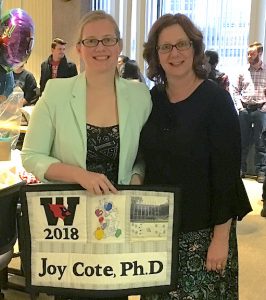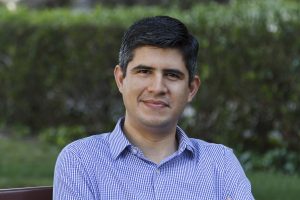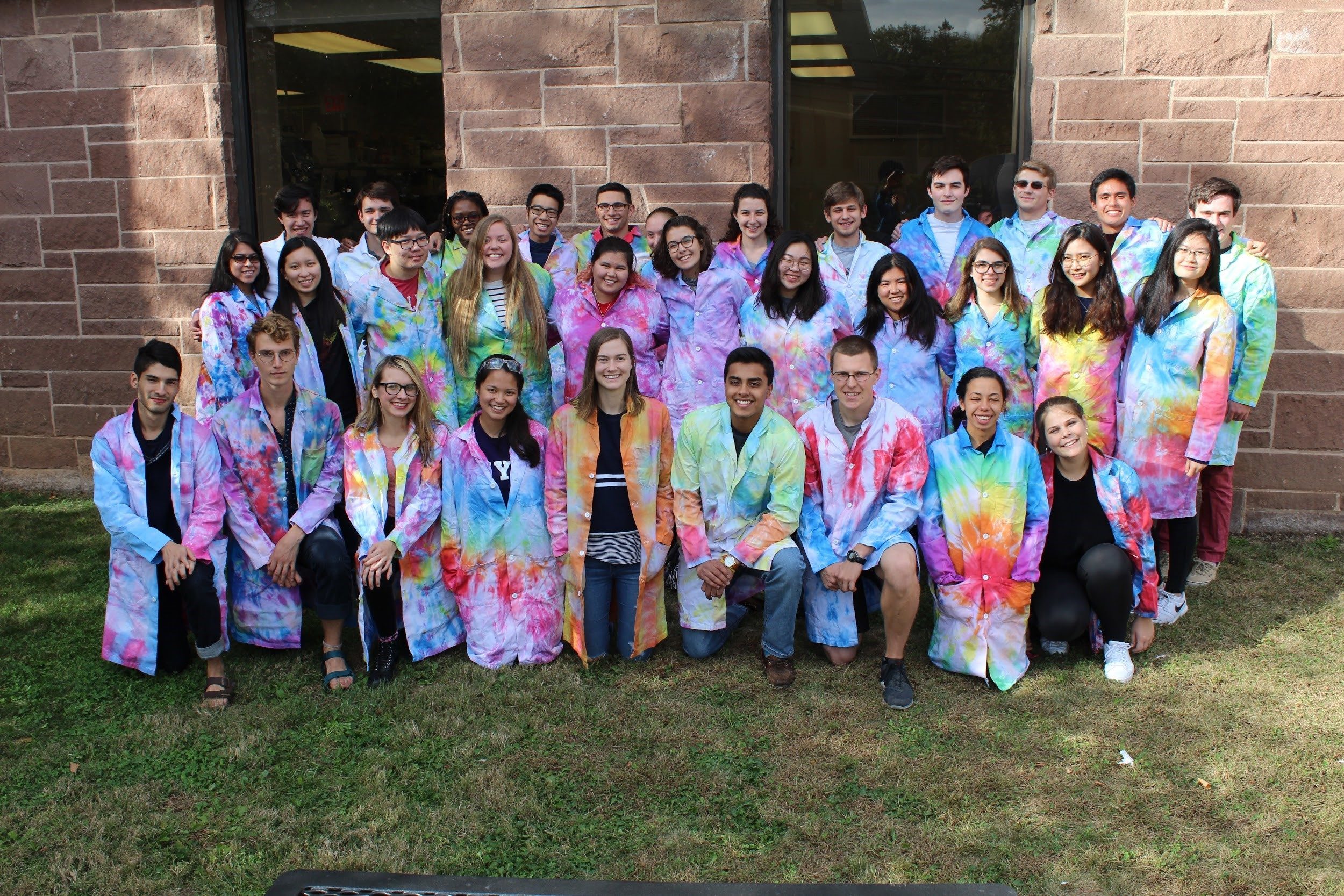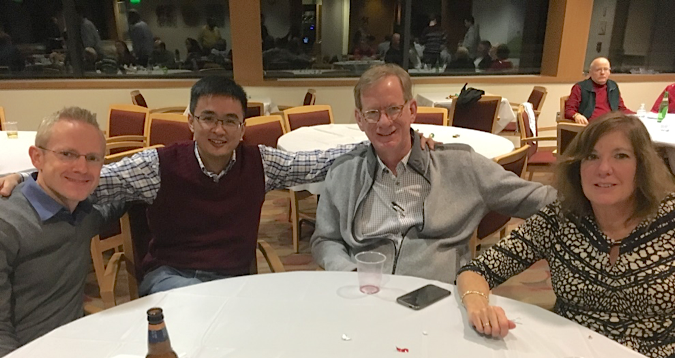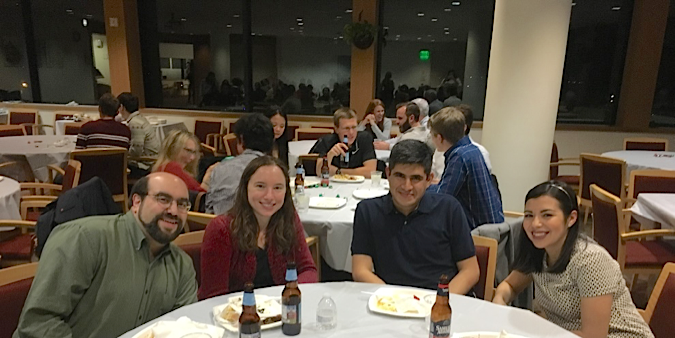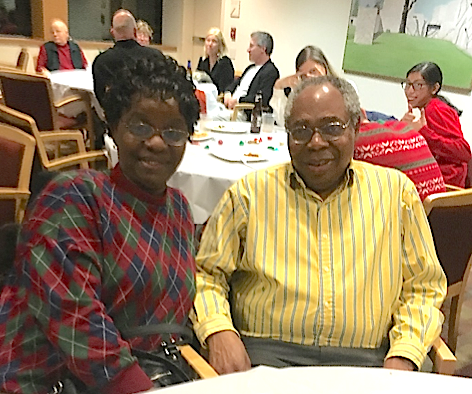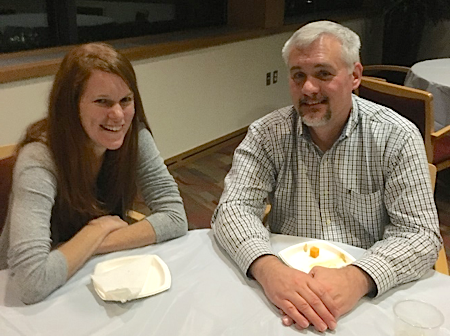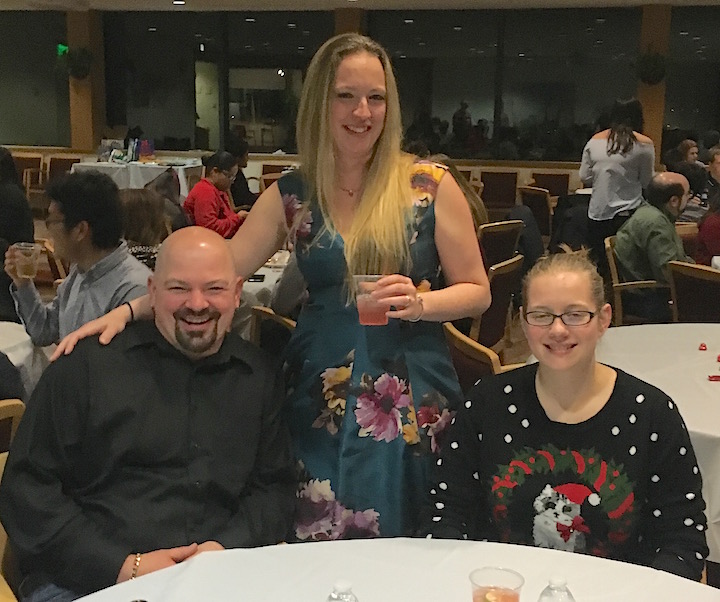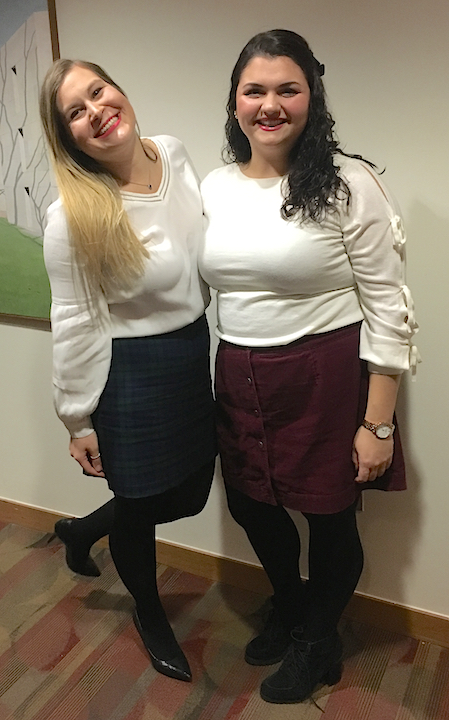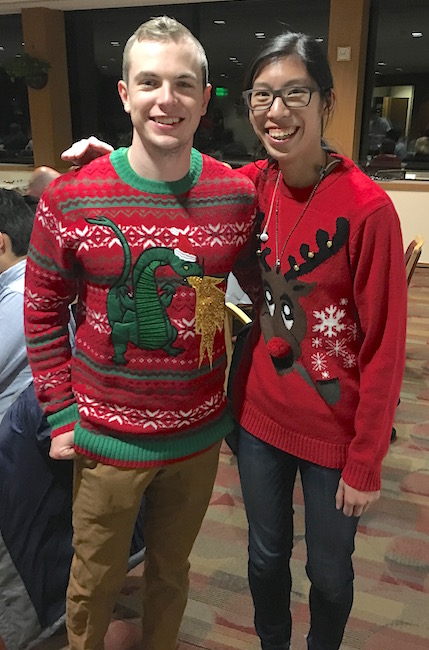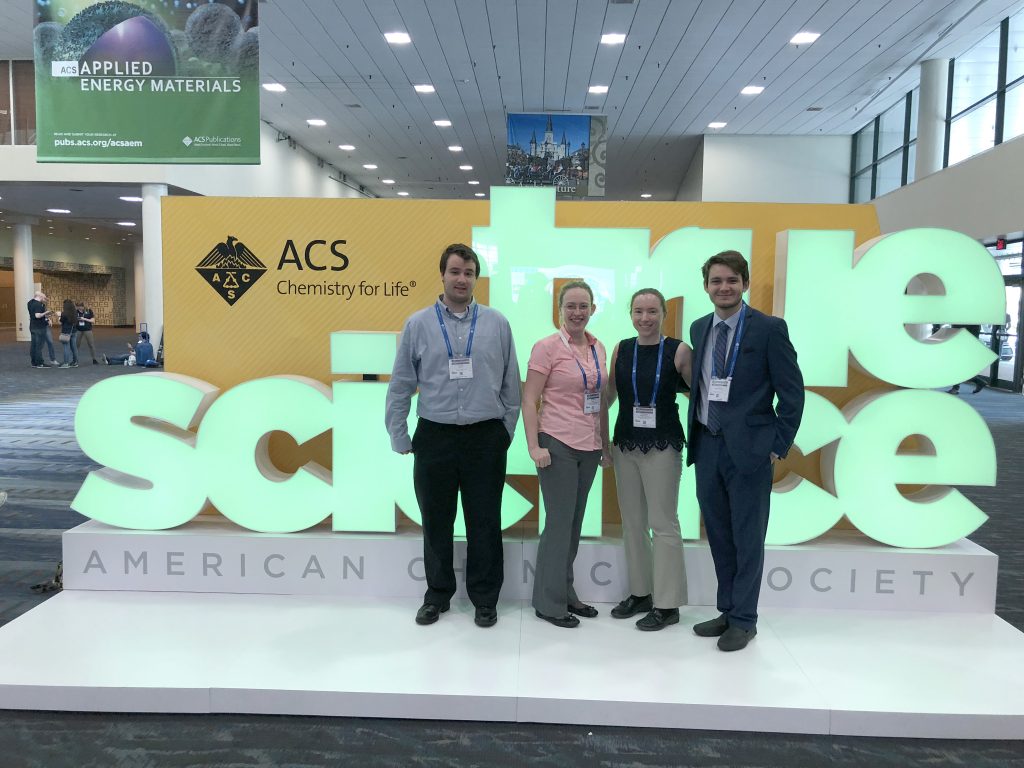
Members of the Personick research group (left to right: David Solti ’18, Melissa King (grad), Prof. Personick, and Danny Robertson ’18) attended the American Chemical Society Spring National Meeting in New Orleans, LA from March 18-22, 2018. Danny gave a talk on Sunday on “(Ag)Au concave cubes as experimental models of computationally predicted active sites for the oxygen-assisted coupling of alcohols.” Melissa presented on Wednesday about her work on “Coupling competitive surface interactions: a synthetic route to enhanced grain boundaries at the exterior of multiply twinned palladium nanoparticles.” On Thursday, Prof. Personick presented the group’s recently published research regarding “Approaches for bridging dissimilar reduction kinetics in the synthesis of bimetallic nanomaterials.” All of the talks were well received by their respective audiences.
In addition to presenting their research, the Wesleyan contingent also recruited prospective graduate students for the Wesleyan PhD program at the graduate school recruiting fair, and Melissa was invited to participate in a panel on “Graduate School: The In’s and Out’s of Getting In” which was very highly attended. Prof. Personick caught up with Wesleyan alum Prof. John Keith (Univ. of Pittsburgh) over breakfast, and everyone spent time sampling the local cuisine.


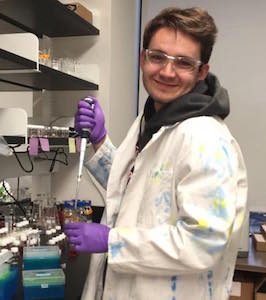 Daniel Robertson, a senior chemistry major, has been awarded a travel grant from the Division of Inorganic Chemistry of the American Chemical Society (ACS). The grant will help defray the costs for him to attend the 255th National Meeting of the ACS, where he will be presenting on his recent research in Prof. Michelle Personick’s lab. His talk is titled “(Ag)Au concave cubes as experimental models of computationally predicted active sites for the oxygen-assisted coupling of alcohols”. The selection criterion for this competitive award is the scientific merit of the work being presented. The meeting will be in New Orleans during the second week of the Wesleyan spring break. If you are attending the meeting, Danny’s talk is scheduled for Sunday, March 18 at 8:50 a.m. in room 212 of the Convention Center. He and Prof. Personick would be delighted to have you there.
Daniel Robertson, a senior chemistry major, has been awarded a travel grant from the Division of Inorganic Chemistry of the American Chemical Society (ACS). The grant will help defray the costs for him to attend the 255th National Meeting of the ACS, where he will be presenting on his recent research in Prof. Michelle Personick’s lab. His talk is titled “(Ag)Au concave cubes as experimental models of computationally predicted active sites for the oxygen-assisted coupling of alcohols”. The selection criterion for this competitive award is the scientific merit of the work being presented. The meeting will be in New Orleans during the second week of the Wesleyan spring break. If you are attending the meeting, Danny’s talk is scheduled for Sunday, March 18 at 8:50 a.m. in room 212 of the Convention Center. He and Prof. Personick would be delighted to have you there.